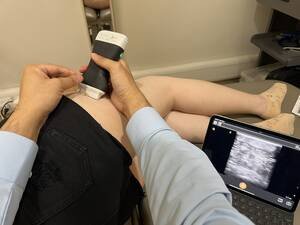Why Dry Needling Is Becoming the Go-To for Low Back PainLow back
If you’ve tried everything for back pain—stretching, massage, even acupuncture—but still feel stuck, here’s what you need to know.
Introduction: The Back Pain Epidemic
Low back pain is one of the most common reasons people seek medical care. It affects up to 80% of people at some point in their lives, and for many, it becomes a persistent, frustrating condition. Maybe it starts after a long road trip, or shows up when you try to return to the gym after a break. Maybe you can’t even trace the moment it began—you just know your back always feels “off.”
For some, back pain is dull and nagging. For others, it’s sharp, unpredictable, and radiates into the hips or down the legs. Whatever your version, if you’ve found yourself in that discouraging space between “not bad enough for surgery” and “nothing I’ve tried really works,” you’re not alone.
Dry needling may be the missing link.
What Is Dry Needling (and How Is It Different from Acupuncture)?
If you’ve read our earlier post, you know that dry needling uses the same tools as acupuncture—thin, flexible needles—but it’s applied a little differently. Dry needling targets what are called myofascial trigger points—hyperirritable, knotted areas in the muscle that can limit movement, refer pain elsewhere in the body, and contribute to a cascade of physical dysfunction.
While acupuncture works more broadly—often on energy meridians or distant points to address systemic balance—dry needling goes local. It’s focused. Precise. A bit more mechanical in philosophy, even if the results can feel miraculous.
And if you’re wondering, yes, it’s very much still part of the acupuncture lineage. It’s just one specific application of those tools, rooted more in orthopedic and anatomical frameworks than traditional Chinese medicine. At our clinic, we integrate both worlds—so you're not choosing between East and West, but combining the best of both.
Why Dry Needling Works So Well for Low Back Pain
Let’s talk about what’s actually going on in your back.
Most low back pain isn't caused by a dramatic injury. It’s often the result of chronically tight muscles, postural strain, fascial restrictions, or imbalances between the hips, glutes, and lumbar spine. Sitting for long periods? Weak glutes? Tight hip flexors? It all feeds into the lower back, which often ends up bearing the brunt.
Trigger points in muscles like the quadratus lumborum, gluteus medius, piriformis, or even the deep rotators of the spine can create pain that mimics sciatica, sacroiliac dysfunction, or general back stiffness. And here’s the kicker: many of these spots don’t show up clearly on an X-ray or MRI.
Dry needling allows us to identify and deactivate those exact spots. You might feel a deep ache, a twitch response, or even temporary soreness—but more often than not, there’s a profound release. Muscles relax. Movement returns. Pain lets go.
How We Do It Differently: The Ultrasound Advantage (Gently)
Here’s something most patients don’t expect: we often use ultrasound imaging to guide our needling—especially when we’re working near sensitive areas, or in cases where other treatments haven’t helped.
You don’t need to understand the tech (though we’re happy to show you). Just know that it helps us be more precise and safer, especially for hard-to-reach or deep structures. We don’t do this because it looks fancy—we do it because it works. Here’s a research link with more technical details: article.
Think of it as the difference between shooting in the dark vs. using a flashlight. You’d still get decent results without it. But once you’ve felt the difference, you’ll get why we do it this way.
Integrative Approach: More Than Just a Needle
Dry needling can be powerful on its own, but we often combine it with other supportive treatments—like acupuncture, manual therapy, myofascial release, and functional medicine—to address the full picture.
Pain isn’t just physical. It's biological, psychological, and often deeply contextual. If you're stressed, not sleeping well, or navigating emotional or hormonal shifts, your back will often be the first to tell you. Our goal is to treat the root cause, not just chase symptoms.
Who It’s For (and Who It’s Not)
Dry needling isn’t for everyone. If you’re needle-phobic or have certain bleeding disorders, we’ll work with you to find an alternative. But if you’re dealing with:
Chronic low back pain
Sciatica-like symptoms
Referred hip/glute pain
Sacroiliac joint discomfort
Postural strain or muscular imbalances
…dry needling might be the game-changer you’ve been waiting for.
Conclusion: You Don’t Have to Live with It
Low back pain doesn’t mean you’re broken. It doesn’t mean you need surgery. And it doesn’t mean you have to just “manage it” for the rest of your life. Sometimes, it means your muscles are sending an SOS—and we have a tool that knows how to listen.
If you’re curious whether dry needling could help you, come in for a free consultation. You’ll get real answers, a thoughtful plan, and care that doesn’t treat you like a number.

